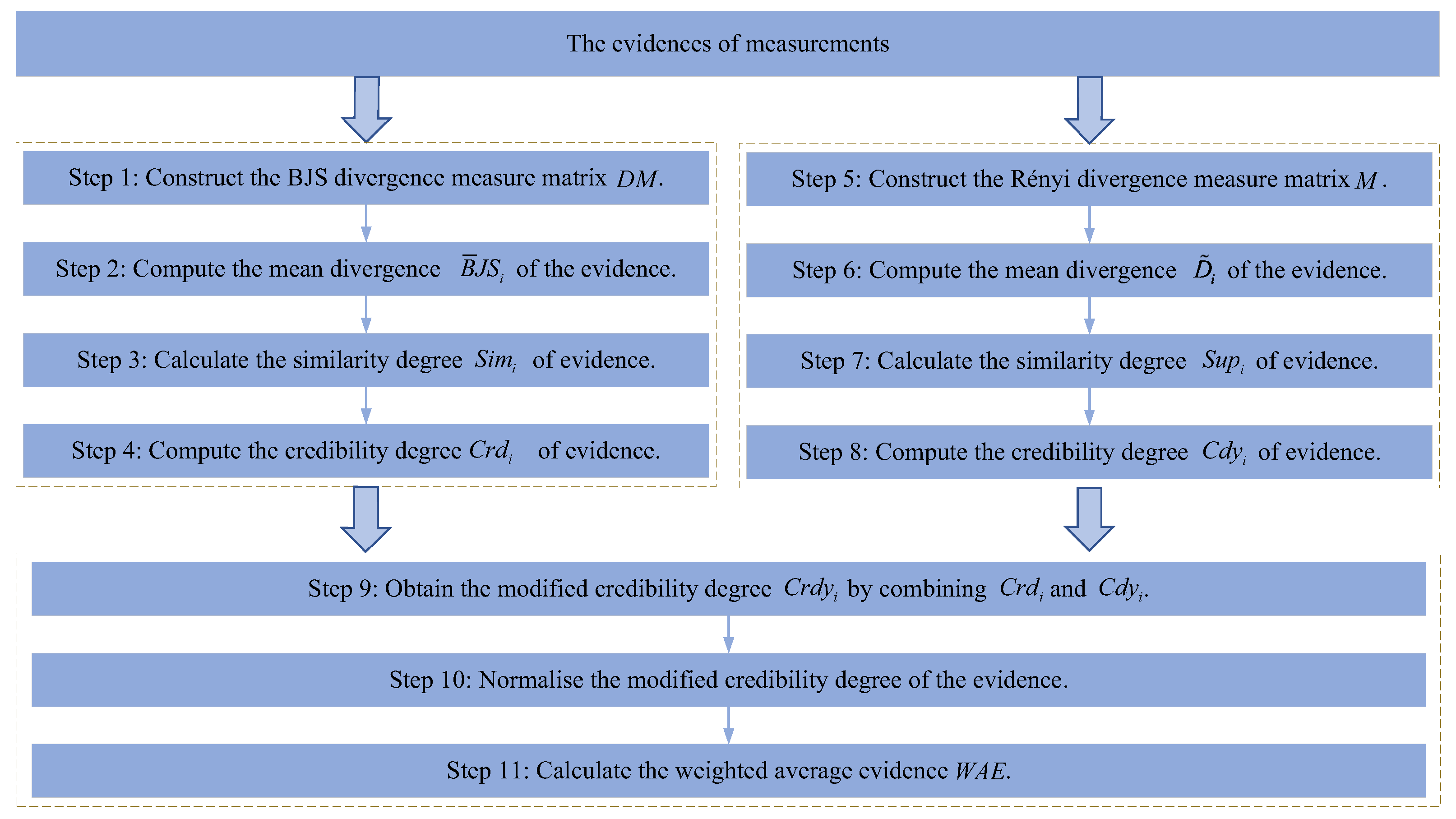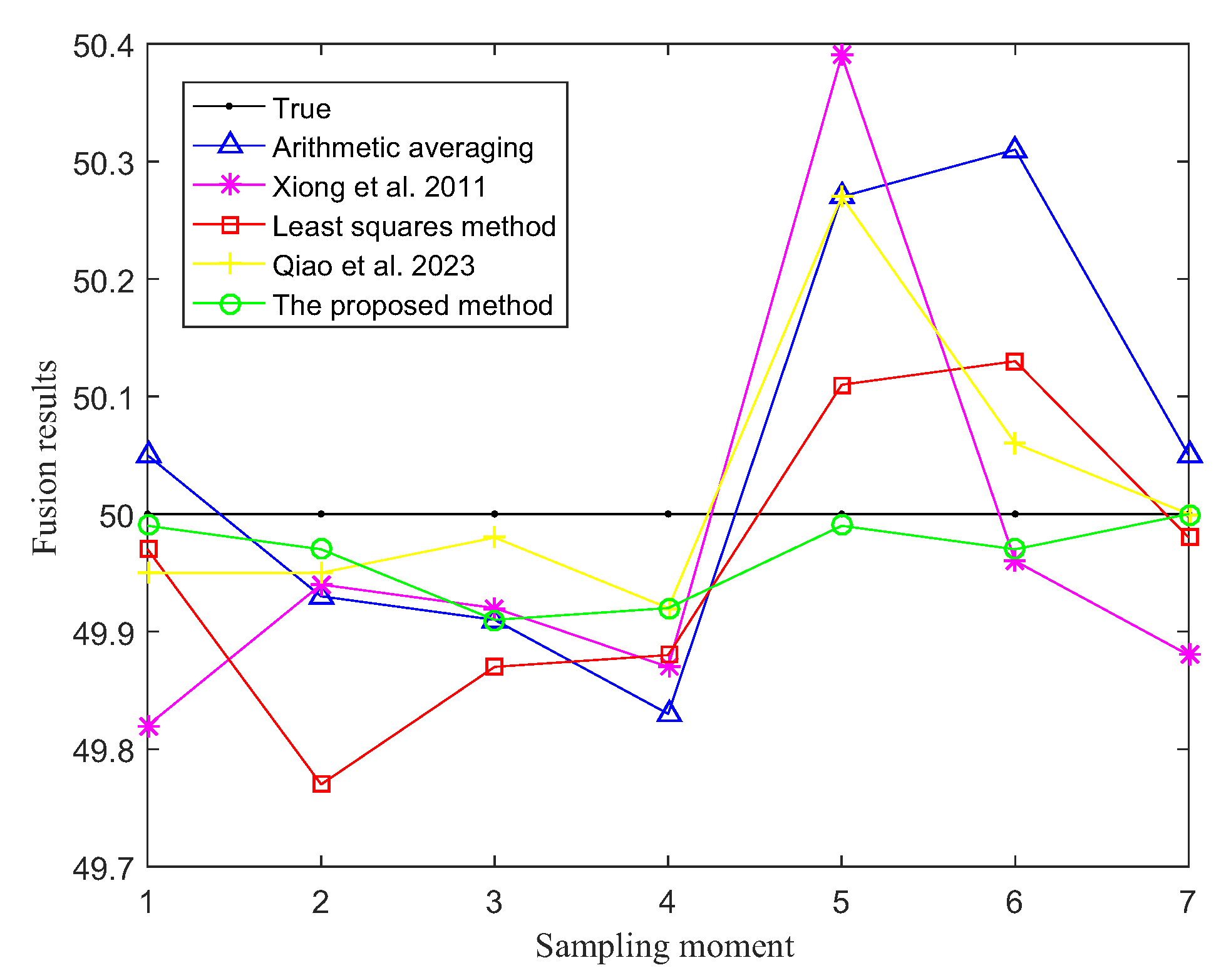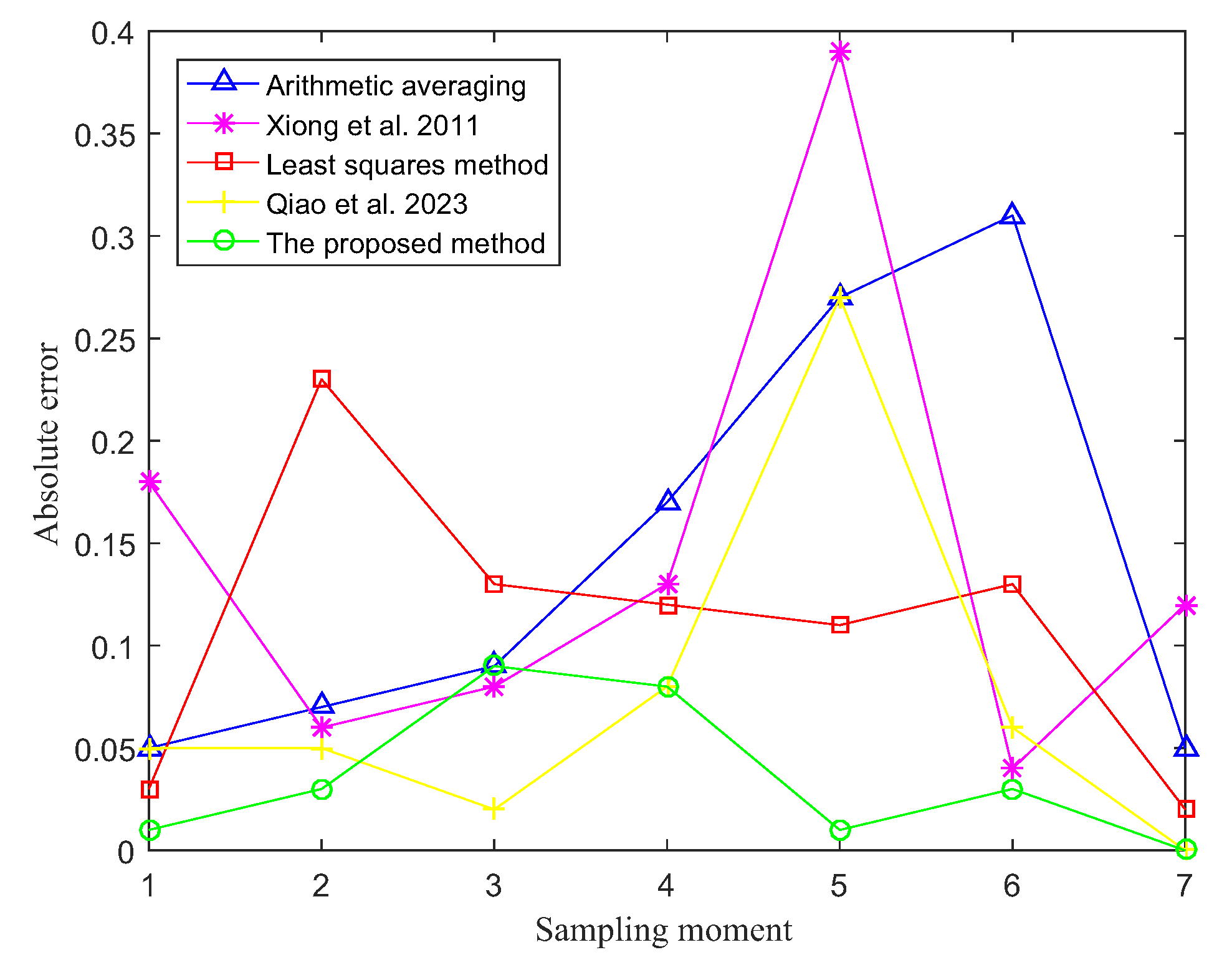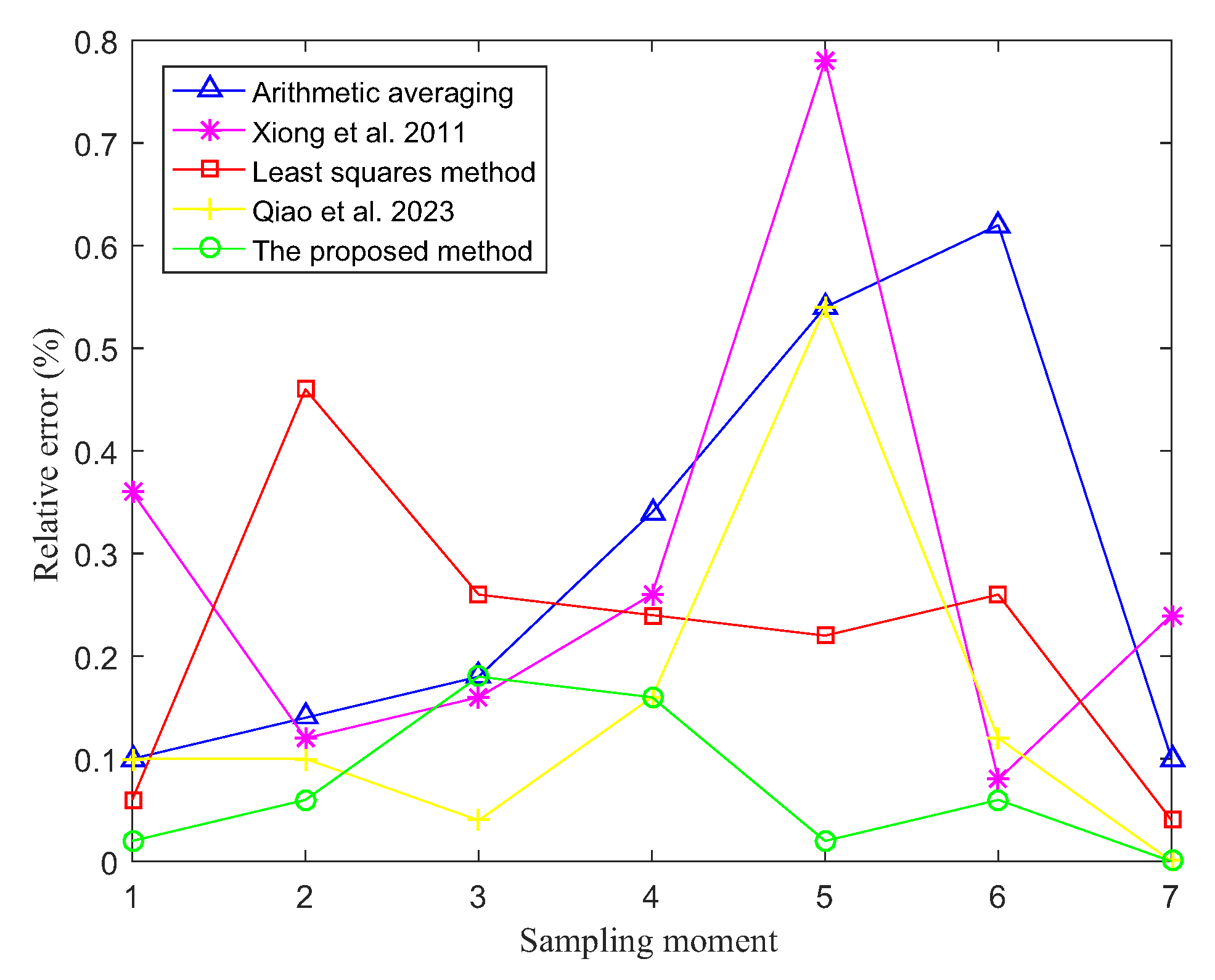4.1. Experiment 1
The metallization layer thickness of a device often requires the average of several measurements to achieve relatively precise results, which can consume considerable resources and time. To reduce the waste of resources, the proposed method uses less data to achieve the same effect.
We sample 8 measurements from 50 measurements of multiple sensors for data fusion, and use the mean 65.57
of the 50 measurements as the assumed true value.
Table 1 lists the sampled measurements.
From (10), the initial evidence for the generation of the affiliation matrix can be given by
The average distance of measurement can be obtained according to (12) and (13) as follows
, , , , , , , .
The average of is obtained as . The modification factors for the initial evidence according to (15) are given as
, , , , , , , .
Table 2 lists the modified evidence pieces. From
Table 2, it can be observed that multiple evidence pieces are allocated to the measurements collected by multiple sensors through the proposed method. The weights of outliers are assigned 0, which indicates that the proposed method eliminates the outliers and can improve the accuracy of the fusion method. The divergence measure matrix
can be calculated as
The mean divergence distance of the evidence based on the is obtained as
, , , , , , , .
The similarity degree for the evidence can be given by
, , , , , , , .
The degree of credibility for the evidence can be counted as
, , , , , , , .
The synthetic average weight evidence is calculated as
, , , , , , , .
The divergence measure matrix
M can be given by
The mean divergence distance of the evidence based on the M is obtained as
, , , , , , , .
The support degree for the evidence can be given by
, , , , , , , .
The degree of credibility for the evidence can be calculated as
, , , , , , , .
can be calculated as
, , , , , , , .
can be computed as
, , , , , , , .
The weighted average evidence is computed as
, , , , , , , .
Based on the evidence combination rule, the synthesized evidence is obtained as
, , , , , , , .
The fusion result of the measurements by (33) can be obtained as
. The fusion results from the other fusion methods and the proposed method for the measurements acquired by multiple sensors are presented in
Table 3. As can be observed from
Table 3, the proposed method has higher fusion accuracy than other fusion methods, and the proposed method has a negligible difference from the reference true value, which indicates that the proposed method can achieve almost an identical fusion effect as many measurements with fewer measurements. The reason why the proposed method can achieve such accuracy is closely related to the fact that the distance between measurements is adjusted to its size according to the experimental data collected by different types of sensors, a reasonable affiliation function is chosen, and two kinds of divergence can be combined to measure the conflict.
4.2. Experiment 2
To verify the feasibility of the proposed method, the measurements of a device parameter collected by multiple sensors are used for testing. The acquired measurements are listed in
Table 4 and the reference true value is selected as 100.
From (10), the initial evidence for the generation of the affiliation matrix can be given by
The average distance of measurement can be obtained according to (12) and (13) as follows
, , , , .
The average of is obtained as . The modification factors for the initial evidence according to (15) can be given as
, , , , .
Table 5 lists the modified evidence pieces. From
Table 5, it can be observed that multiple pieces of evidence are allocated to each measurement. Multiple evidence pieces for outliers are assigned a value of 0, which indicates that the proposed method is effective in eliminating the interference of outliers. The divergence measure matrix
can be calculated as
The mean divergence distance of the evidence based on the is obtained as
, , , , .
The similarity degree for the evidence can be given by
, , , , .
The degree of credibility for the evidence can be counted as
, , , , .
The divergence measure matrix
M can be given by
The mean divergence distance of the evidence based on the is obtained as
, , , , .
The support degree for the evidence can be given by
, , , , .
The degree of credibility for the evidence can be calculated as
, , , , .
can be calculated as
, , , , .
can be computed as
, , , , .
The weighted average evidence is computed as
, , , , .
Based on the evidence combination rule, the synthesized evidence is obtained as
, , , , .
Table 6 lists the measurement fusion results for the proposed and comparative methods. As can be seen from
Table 6, the fusion result of the proposed method is very close to the true value and shows a great improvement in accuracy compared with the other methods, which indicates that the proposed method is also able to obtain high accuracy for measurements with different multi-sensor acquisitions. The experimental measurements are obtained from five sensors, the number of sensors is reduced by almost half compared to the previous experiment, but the fusion result of the proposed algorithm is still able to achieve a high level of accuracy, which further demonstrates that the proposed algorithm is capable of obtaining more accurate results with less data. In addition, it can be seen from another perspective that the proposed method still yields superior performance with different data quality and sensor noise.











